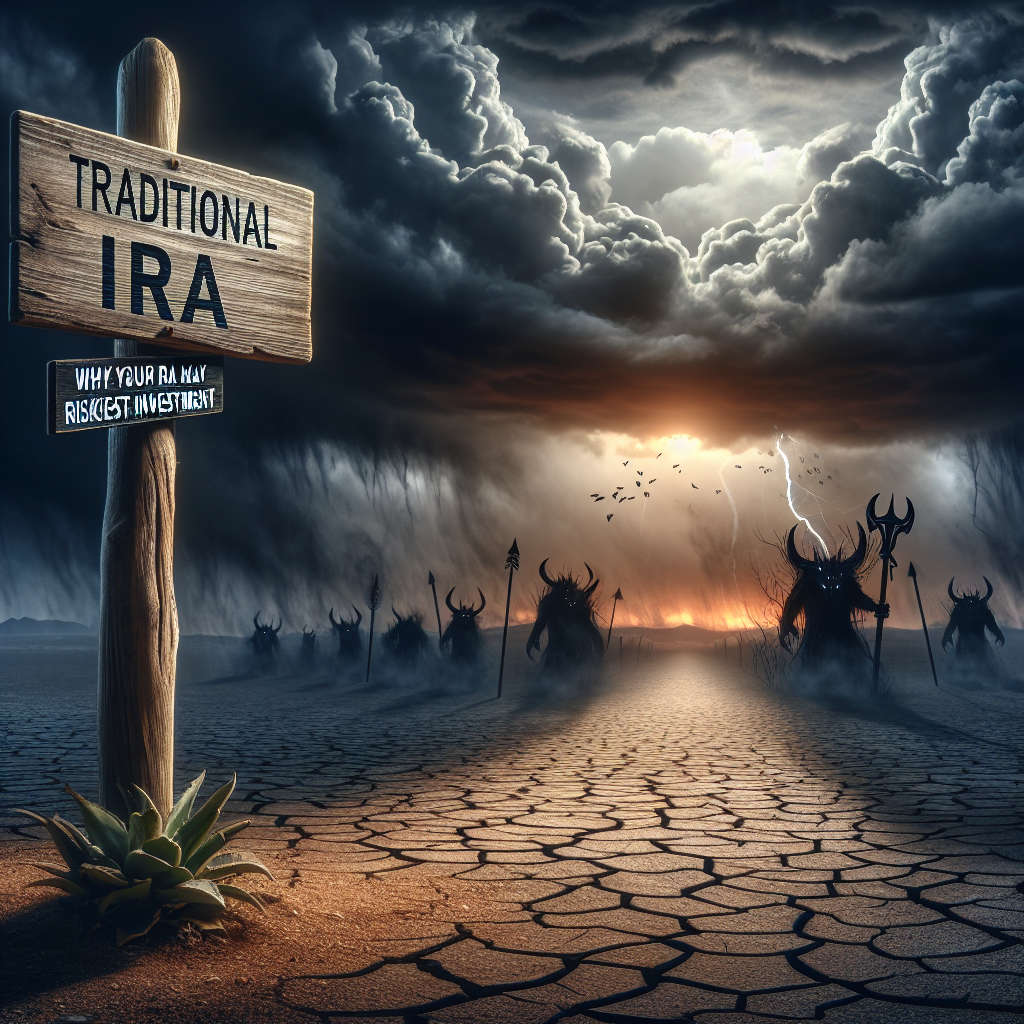The Risks of a Traditional IRA: What You Need to Know
Investing for retirement is a crucial part of financial planning. Many individuals turn to a Traditional IRA (Individual Retirement Account) for its tax advantages and growth potential. However, what if we told you that this popular retirement tool could also carry some hidden risks? Let’s dive into why your Traditional IRA might not be the safe haven you think it is.
Understanding Traditional IRAs
A Traditional IRA allows you to save money for retirement while enjoying tax benefits. Contributions are often tax-deductible, which means you can lower your taxable income for the year. Your investments grow tax-deferred, meaning you won’t pay taxes on the account’s growth until you withdraw funds in retirement.
At first glance, a Traditional IRA seems like a secure way to save for the future, but there are important factors to consider.
The Pitfalls of a Traditional IRA
Market Volatility
One of the fundamental risks associated with a Traditional IRA is market volatility. The investments inside your IRA – whether stocks, bonds, or mutual funds – can be affected by market fluctuations. If the market takes a downturn, the value of your investments can decrease, sometimes significantly. Unlike guaranteed savings accounts, your retirement savings may take a hit, and it can be challenging to recover losses.
Limited Investment Options
While Traditional IRAs offer a variety of investment choices, many financial institutions limit these options. Often, investors are restricted to the funds and assets available through their account providers. This limitation can hinder your ability to diversify your investments effectively, increasing your risk exposure.
Required Minimum Distributions (RMDs)
Once you reach age 73, the government requires you to start withdrawing a minimum amount from your Traditional IRA each year, known as Required Minimum Distributions (RMDs). Failure to take these distributions can result in hefty penalties, which means you could face unexpected tax bills in your later years. For those who would prefer to leave their investments to grow longer, this can be a significant drawback.
Tax Liability Upon Withdrawal
When you withdraw funds from your Traditional IRA in retirement, those distributions are considered taxable income. Depending on your income level at that time, you may end up paying a substantial amount in taxes. Some people find that they might be in a higher tax bracket during retirement than they anticipated, potentially taking a larger bite out of their savings.
The Importance of Diversification
To mitigate the risks associated with a Traditional IRA, it’s crucial to diversify your investments. Spreading your money across various asset classes can help protect your portfolio from market volatility. Consider a mix of stocks, bonds, and even alternative investments to create a balanced approach.
Proper diversification not only helps reduce risk but also enhances the potential for returns. You can explore options like real estate or commodities, and even look into broader markets. Always take the time to do your research or consult with a financial advisor to determine what combination best fits your investment goals.
Exploring Other Retirement Accounts
If the risks of a Traditional IRA give you pause, consider exploring other retirement savings options. Here are a few alternatives:
Roth IRA
A Roth IRA allows you to contribute after-tax income, which means your withdrawals in retirement are tax-free, including any growth. There are no RMDs with a Roth IRA, so you can allow your investments to continue growing for as long as you want.
Health Savings Accounts (HSAs)
If you have a high-deductible health plan, consider contributing to an HSA. While not a traditional retirement account, HSAs offer tax-free contributions and withdrawals for qualified medical expenses. After age 65, you can use funds for any purpose without penalties, adding versatility to your retirement strategy.
401(k)
A 401(k) plan through your employer may also be a suitable alternative. Many employers match contributions, which can give your savings a significant boost. The retirement landscape is changing, and understanding your options is vital for making informed decisions to secure your financial future.
Conclusion
While a Traditional IRA can be an essential component of your retirement plan, it is not without its risks. Understanding the potential downsides can help you make informed choices. Remember to diversify your investments, and don’t hesitate to explore other retirement savings options that may provide greater benefits.
Before making any changes to your financial strategy, consider seeking guidance from a financial advisor. They can help you assess your individual risk tolerance and investment goals.
For additional insights and tools to help you make smart financial decisions, check out StockPulsar.
Investing for retirement should be a strategic and personal journey. Take the time to explore your options, weigh the pros and cons, and create a tailored plan that suits your financial needs. The earlier you start planning, the better prepared you’ll be for a comfortable retirement.



